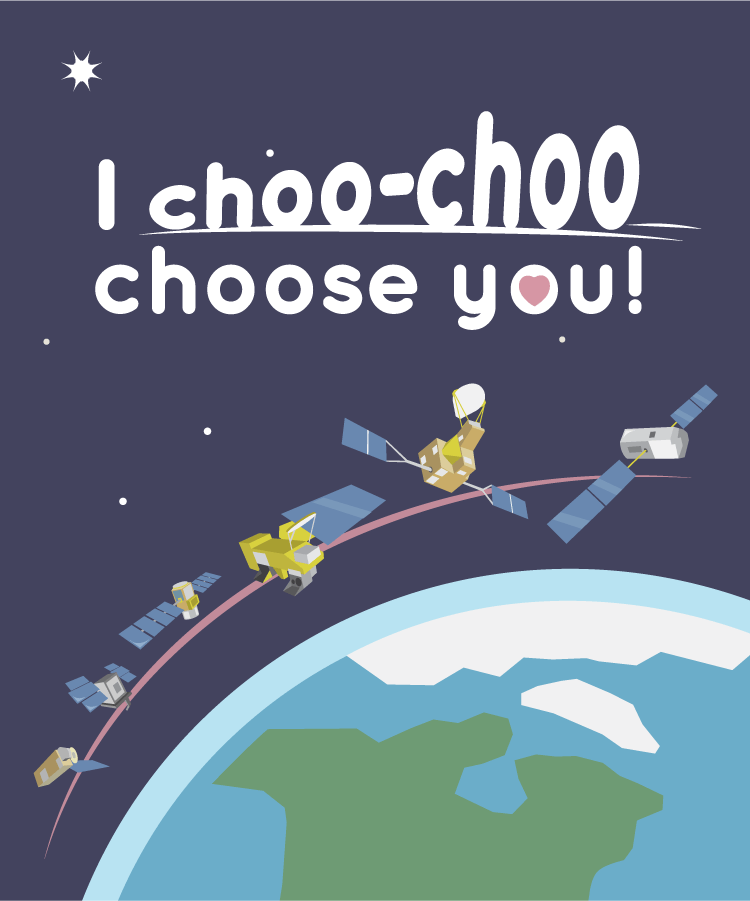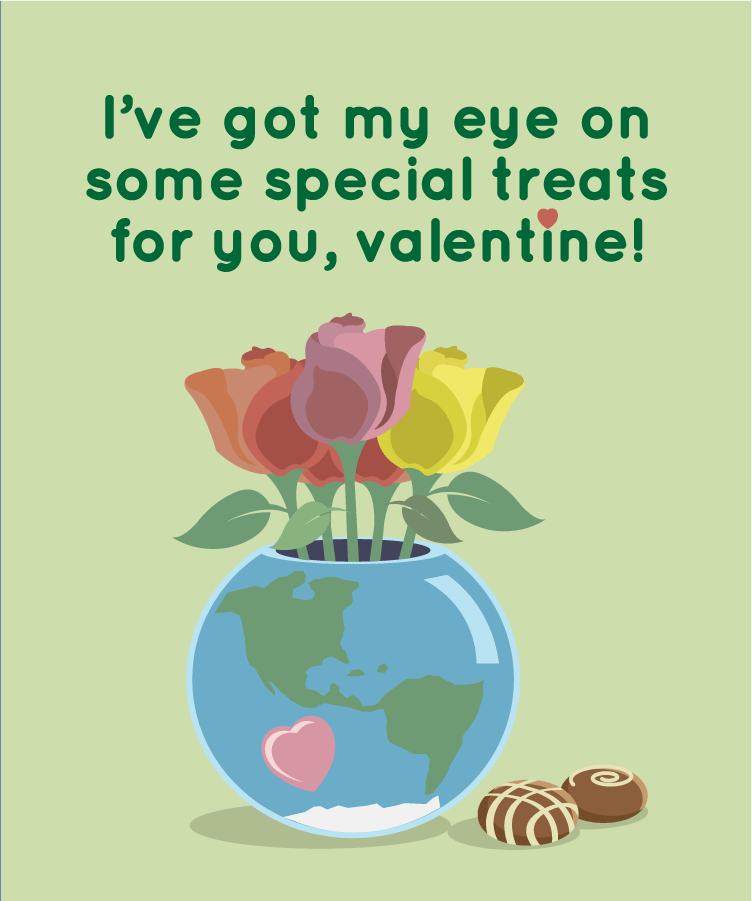NASA Climate Kids Valentines
Print these NASA Climate Kids Valentine's Day cards and give them to family and friends!

You warm my heart!
Gases in Earth's atmosphere trap heat from the Sun. This is called the greenhouse effect, and it's what makes Earth warm enough to live on. But Earth's balance is important. Too many greenhouse gases—and too much warming—are a bad thing.
Find out more about the greenhouse effect.

I choo-choo-choose you!
NASA and its international partners operate several Earth-observing satellites that closely follow one another along roughly the same orbital "track." This group of satellites is sometimes called the "A-Train."
Learn more about how NASA studies Earth.

I'd circle the world for you, valentine!
The Jason-3 satellite continuously orbits our planet. In fact, it takes a complete measurement of Earth's sea level once every 10 days.
Learn more about measuring sea level rise.

We make a good team!
The GRACE-FO mission is actually two twin satellites that orbit Earth one right after the other. As the pair circles Earth, areas of slightly stronger gravity affect the lead satellite first, pulling it away from the trailing satellite. Measuring this effect can help scientists identify changes in where Earth's water is stored.
Learn more about the GRACE-FO mission.

I've got my eye on some special treats for you, valentine!
NASA's satellites measure soil moisture, rain, and snow, plus plant health and more. These are key ingredients to help grow Valentine flowers, cocoa beans for chocolates, and other important crops around the world. Scientists can use this information to help the people who grow our food. These measurements also help us better understand our planet and how it is changing.
Learn more about why NASA cares about food.

I've got an ocean of love for you, valentine!
The ocean covers about 70% of Earth's surface. The ocean plays an important part in Earth's environment. One of its largest roles is to soak up energy (heat) and distribute it around the globe. The ocean also helps to absorb extra carbon dioxide in Earth's atmosphere.
Learn more about what's happening in the ocean.
Other NASA Valentines:
NASA Space Place Valentines
Create Your Own NASA Valentines
More NASA Valentines
NASA Exoplanet Valentines
NASA Solar System Valentines












